How to prune apple trees: must-know advice on how and when to do it
Learning how to prune apple trees at the right time could mean everything for the health and bounty of your favorite fruit tree

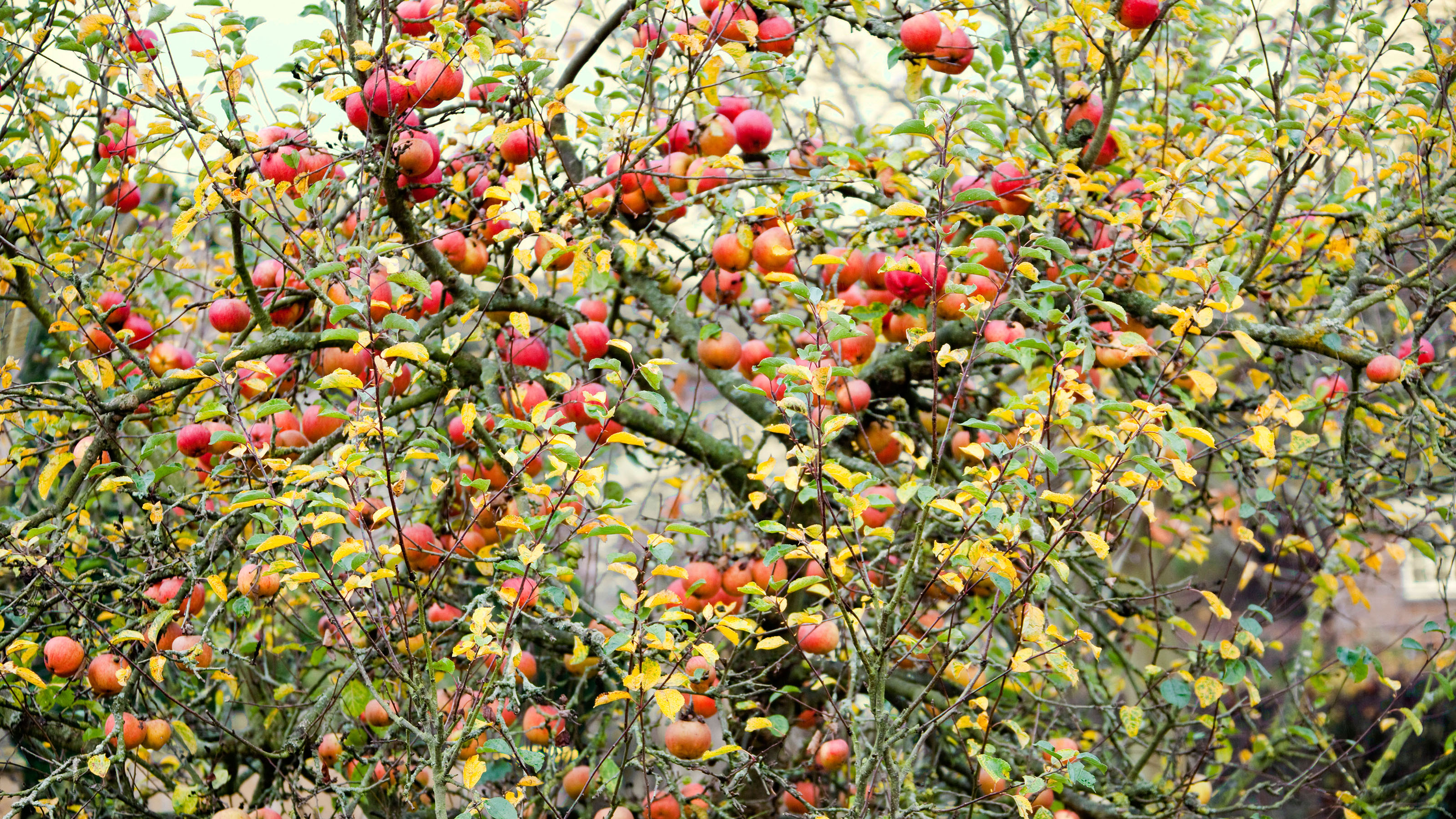
Knowing how to prune apple trees is a worthwhile skill. Given that apples are among the most popular fruit grown at home, the chances are you might have one in your yard or garden.
They’re great providers, often giving more fruit than one family can eat, meaning you can gift delicious apples and even tastier desserts to friends, freeze stewed apple, and happily leave some for the birds and other wildlife to enjoy too.
Once your apple tree is established, it only needs a little attention each year to make sure it stays healthy, doesn’t outgrow the available space, and keeps cropping well.
You get a lot back for a small investment of time and effort, and pruning your fruit trees can be very mindful and satisfying too.

How to prune apple trees to get the best results
Apple varieties are grafted onto a rootstock which determines the ultimate size of the tree. But whether your tree is a miniature in a pot, or a large, standard lollipop shape, how and when to prune fruit trees is an important skill to get right.
In the first four years, pruning apple trees is known as 'formative pruning', which should be done to shape the tree and create an open centre. After this, maintenance pruning is all that’s needed.
Its purpose is to keep the tree fruiting well by removing a little old wood each year, using the best secateurs, to stimulate a little new growth.

Pruning standard or bush apple trees
- Prune branches you can safely reach. If you can’t reach part of a branch, don’t worry, because you wouldn’t be able to reach it to harvest the apples anyway. The specialists at CRJ Fruit Trees say it is 'best to address the larger branches first and then see if any of the smaller ones need your attention. This approach will help you avoid trimming away growth that would turn out to be beneficial.'
- Prune out any dead wood, and any diseased growth. Cut cleanly back to the base of the branch, or to healthy growth. Bin or burn anything diseased to minimize the chances of overwintering diseases on the tree or in the soil. There are plenty of ways to make use of woody waste for the healthy branches you've removed.
- As with how to prune blackcurrant bushes you want to prune out weak or crossing branches so you have strong growth and an open, goblet-shaped canopy, which plenty of air can circulate through. Cut back to the base of the branch, or to a side shoot, or a bud facing the desired direction of growth. Cut about 1/4in (0.5cm) above that bud. Angle the cut to about 45 degrees so that rain does not collect on the cut end.

When to prune standard or bush apple trees
Unlike stone fruits where pruning take place in summer (as explained in our guide on how to prune a plum tree), apple trees are pip fruits and should therefore be pruned in winter, while the tree is dormant, before leaf buds starts to open.
Most experts, including those at the RHS recommend winter to early spring.
Anne Swithinbank, expert at Amateur Gardening adds: ‘Untended apple trees are a thing of beauty, wreathed in spring blossom, laden with fruit and fantastic for wildlife. Pollinating insects visit for nectar, birds take many aphids and caterpillars, especially when feeding their chicks, and fallen fruit sustains a wide range of birds during winter.’
‘So unless you are keen to improve the bearing and quality of fruit by learning how to prune apple trees, don’t feel you have some kind of obligation to prune just for the sake of it, and instead keep your apple tree as a low-maintenance tree,’ she advises.

Pruning trained (or cordon) apple trees
The main prune for trained backyard trees, such as cordon apple trees, is done in late summer. Its purpose is threefold: to increase light to the ripening fruit so you get bigger, sweeter, more colorful fruit; to keep the tree compact in its restricted shape by reducing vigor; and to encourage fruiting buds to form lower down the branch for next year.
The Orchard Project charity says: 'Wait until the base of new shoots have turned woody and growth has slowed. Shoots will be darker in color and less bendy.'
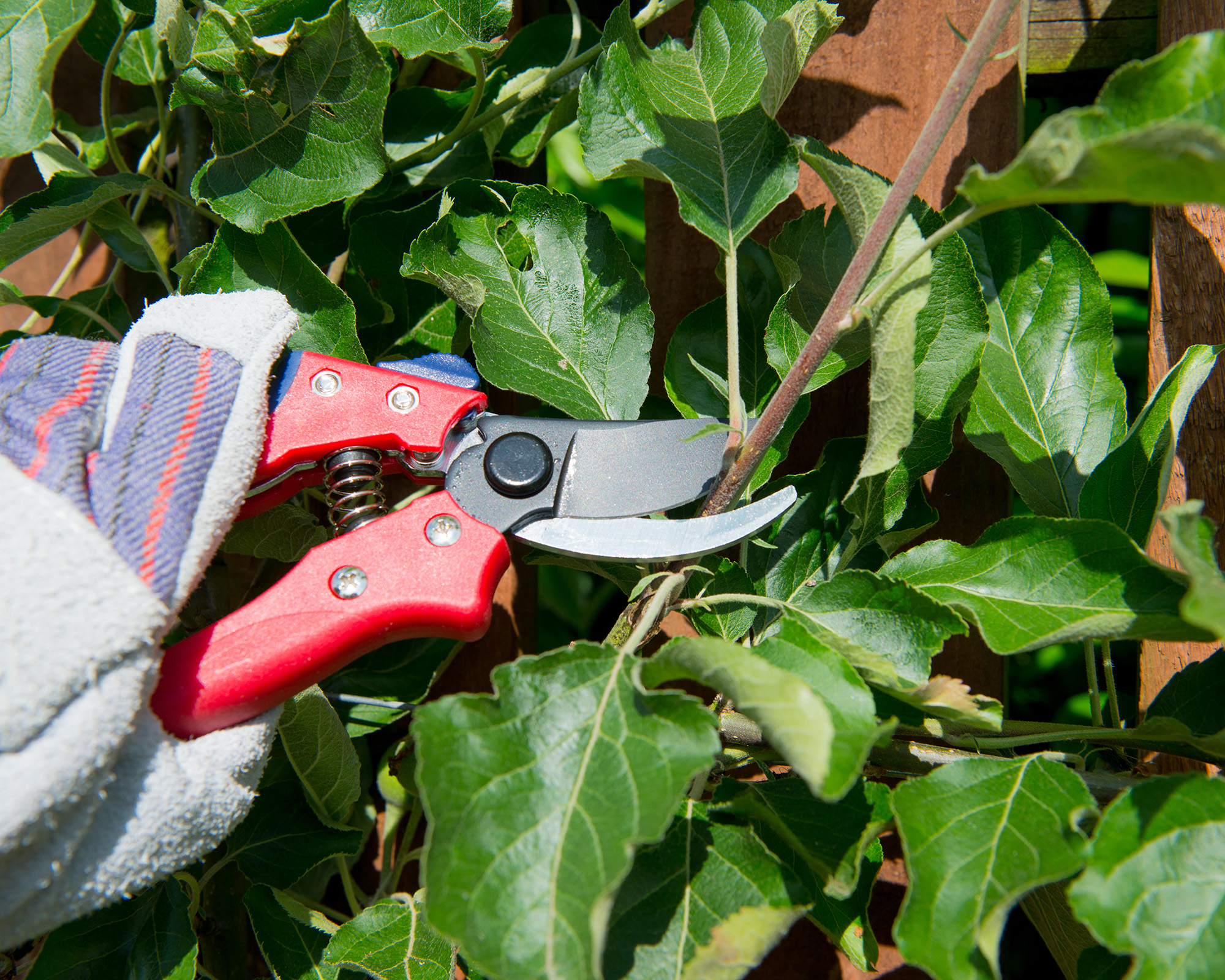
- Vigorous new shoots, 8in (20cm) long, growing from the main stem (laterals), can be cut back to three leaves above the basal leaf cluster.
- Cut new shoots on existing side-shoots (sub-laterals) back to one leaf above the basal leaf cluster.
- Upright vigorous growth can be cut at its base, removing it completely.
- The leading growth (leader) should be tied to the support. Once it’s as tall as you want, prune it back, treating it as a lateral. Trained apple trees can be kept as trees for small gardens by pruning back lateral stems.
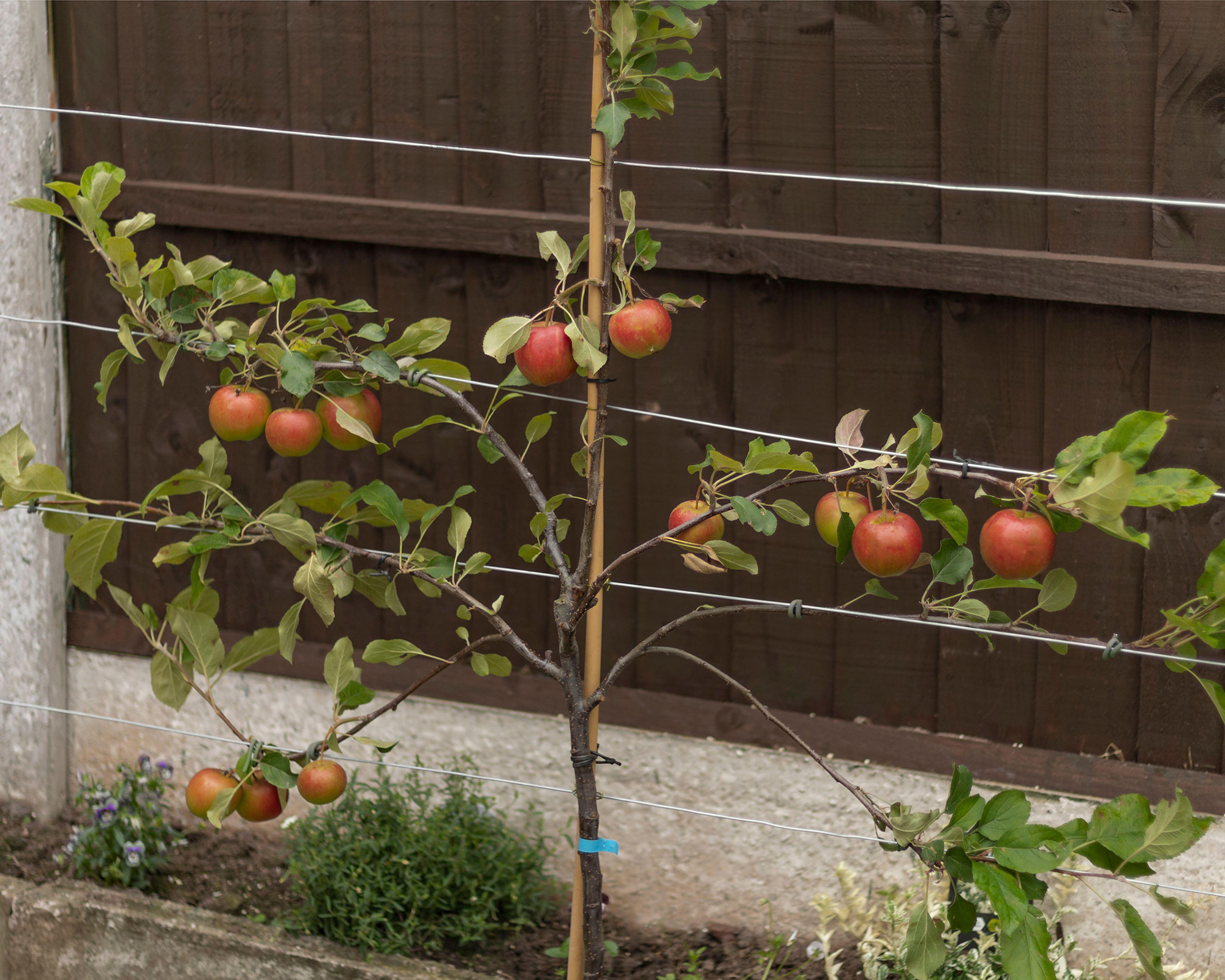
When to prune trained apple trees
Trained apple trees need to be pruned in summer to keep their growth in check and also to encourage more fruiting wood.
However, as the RHS advises, 'If you get secondary growth resulting from some of the pruning cuts, which inevitably does happen, you can cut the shoot back in fall, to one bud below the secondary growth, and you’ll still have fruit buds forming for next year.'
In late winter or early spring, when apples quickly become one of the best flowering trees, you may need to cut back any secondary growth if you chose not to in fall, perhaps due to poor weather.
On well-established trained apples, you may also need to thin overcrowded fruiting spur systems. This is easier in winter when the tree is leafless.
The winter prune only needs to be done when the spurs are too close together, to allow the fruit to develop properly. Thin each overcrowded spur by half to two thirds its original volume.

How much can you cut back an apple tree?
- Remove a fifth of the canopy The RHS say: 'Aim to take between 10-20% of the overall canopy off in any one winter. Work around the tree evenly and keep an eye on your pruning pile – if it's looking a little big, stop.'
- Don't get carried away Always exercise caution, and keep stopping to check on your progress. 'Never take more than a quarter of the branches in one year and cut them close to the main trunk or to a healthy side branch,' says Anne Swithinbank.
- Remove unproductive shoots Pruning will result in strong regrowth and it promotes leafy growth instead of fruiting and flowering buds, so you’ll have to prune out all those unproductive shoots next year.
- Take back this year's growth You’ll see the bark on the most recent year’s growth is a different shade. Aim to trim that length back by about a half or so. The late, great gardening guru Peter Seabrook, a regular writer for Amateur Gardening said: 'The tips of the branches need to be reduced by a half to two thirds. That encourages the tree to branch out further down that stem. If you leave it to grow out, you have a whole lot of bare stem and a fruiting on the end which just takes the whole lot down and it will break.'
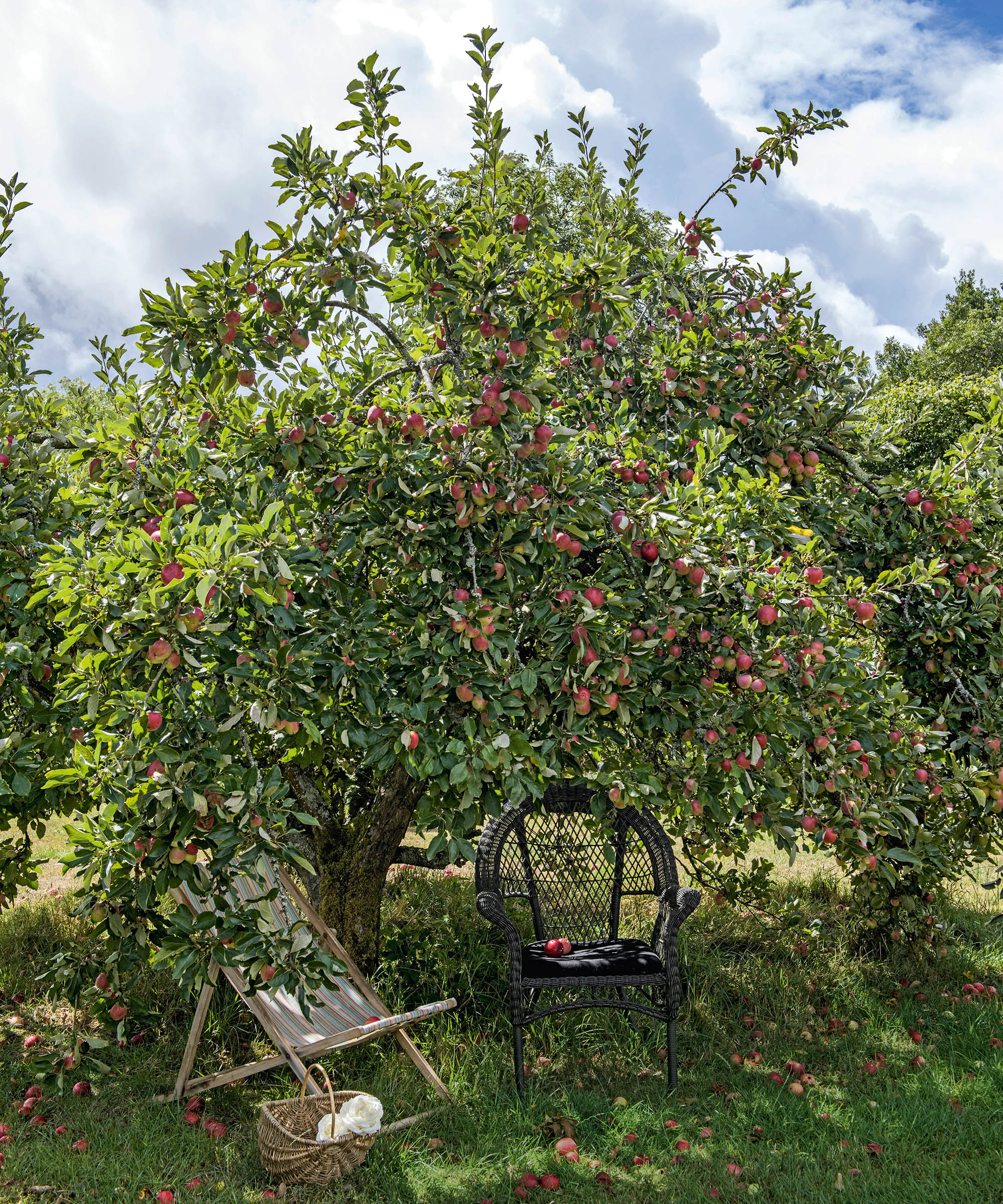
How to prune overgrown apple trees
Cut back overgrown apples over two or three winters to reduce the shock to the tree. Hard pruning, removing more than 20% of the tree, would lead to lots of vigorous, leafy growth (watershoots). These congest the canopy and don’t bear fruit, so you’d have to prune them out too, so best to stagger it.
In year one, prioritize by pruning out any dead, diseased or broken branches. That may be all for year one. Next on the list are any rubbing branches. Then crossing branches. Aim to open up the centre of the tree as you would for standard apple trees.
Use a sharp pruning saw on branches from thumb-to-wrist thickness. But the RHS warns, 'as a general rule, think twice before cutting into branches that are more than 4-5in (10-12cm) in diameter.'
'If you must prune that branch, trace it away from the tree to see if there is a narrower section, perhaps where it forks and prune there instead. Avoid leaving a stub by cutting just above the collar at the base of the branch so the tree can seal the wound using cells from the trunk,' say the RHS.
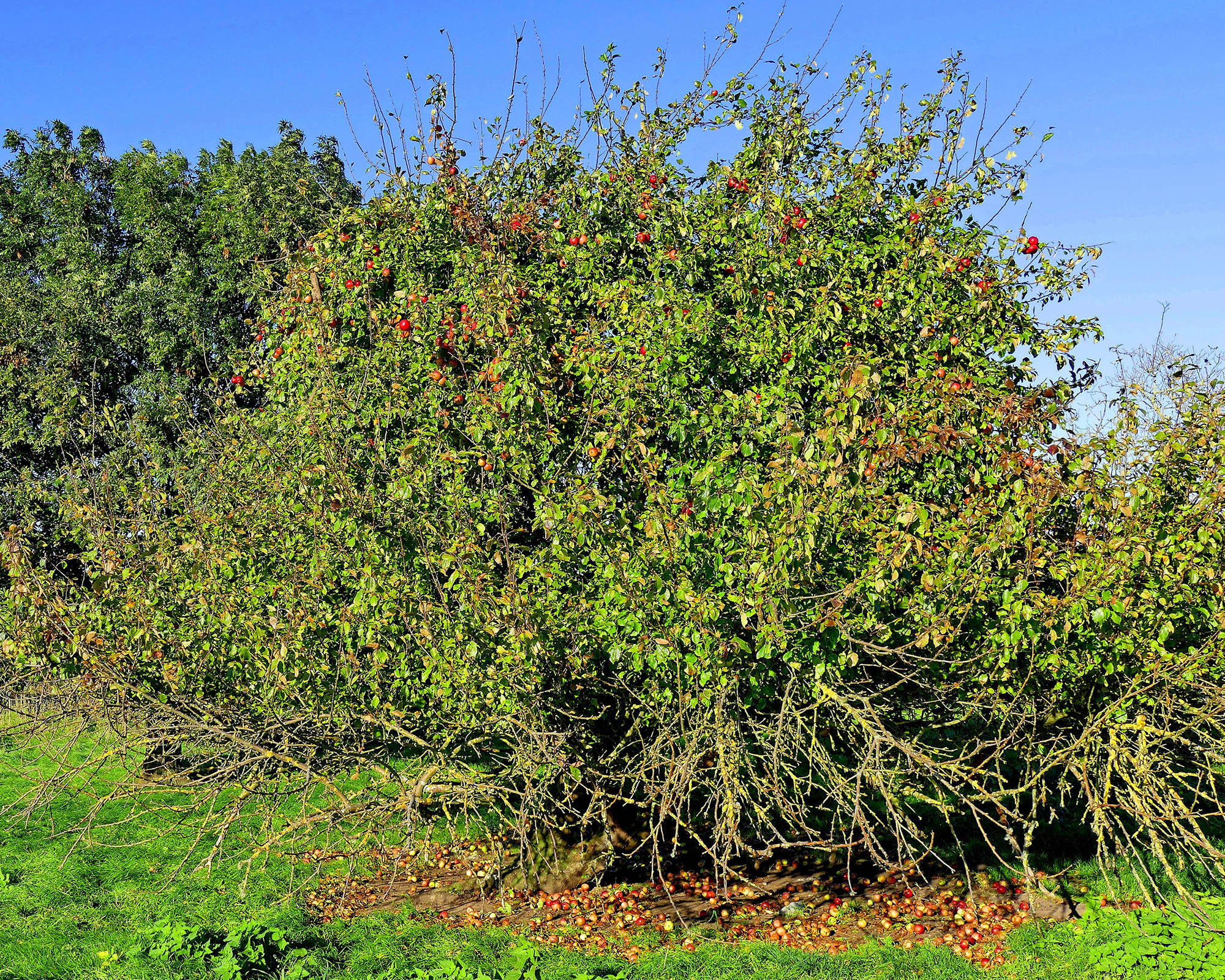
Can I prune the top of my apple tree?
Yes! But don’t just cut the top, or give the top a 'haircut' which makes all the branches the same height. Treat it like the rest of the tree, cutting back where necessary to shape the tree and control the new growth.
The RHS advises staggering your pruning cuts throughout the canopy to ensure an even regrowth. Only pruning the top branches for example, will create a 'thicket' of non-fruiting shoots next year.
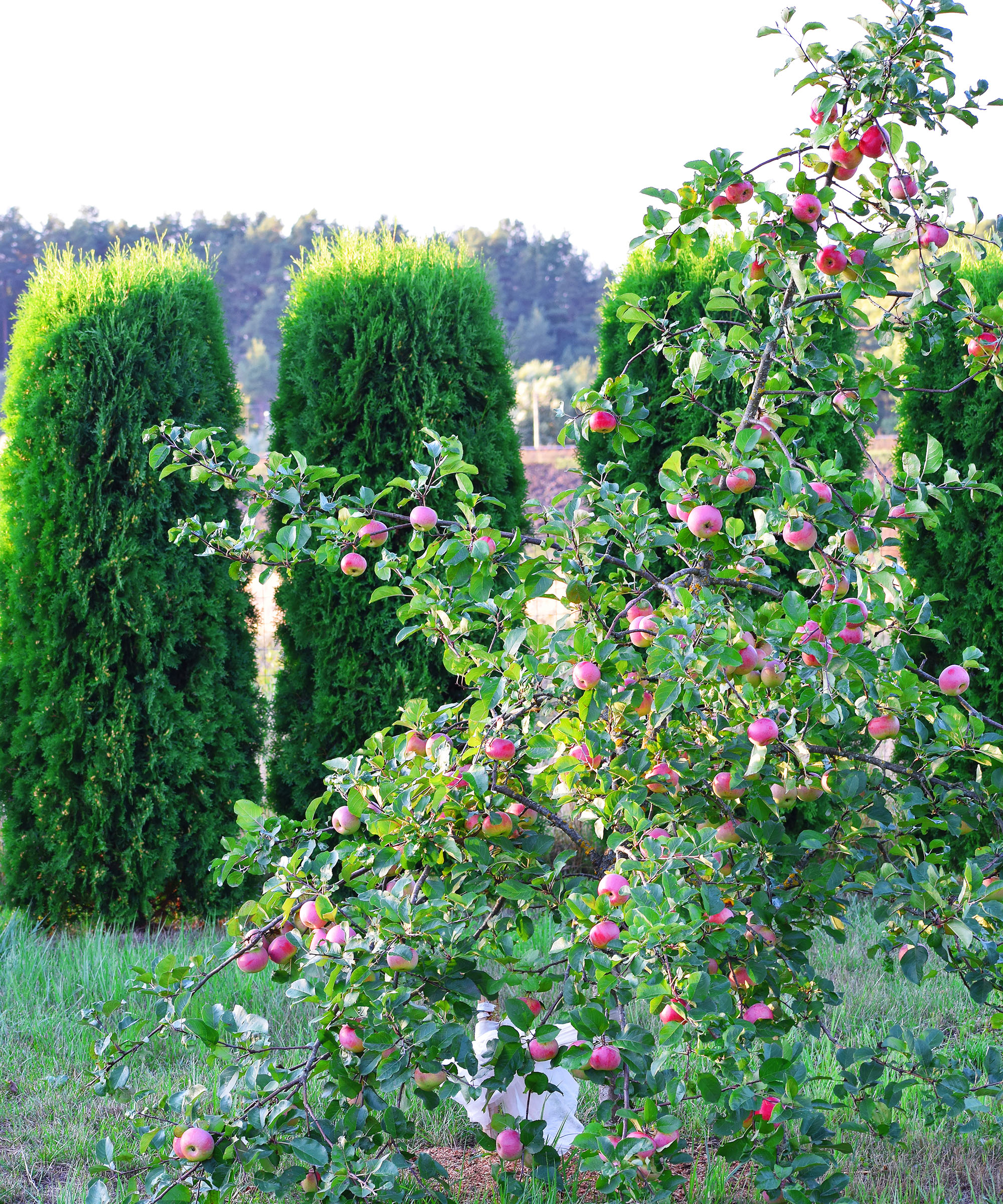
Do apples grow on new or old wood?
Most varieties fruit best on wood that is 1-4 years old. Their blossom and then fruit is carried on this wood, on short side shoots known as ‘spurs’. These varieties benefit from pruning, whether they are grown as backyard trees or a tree for the front yard.
Some varieties, such as ‘Bramley’, don’t tend to make spurs, so fruit on the ends of last year’s growth. These are known as 'tip bearers'. As edibles expert Bob Flowerdew says in his book Bob's Basic's - Pruning, Training and Tidying, available at Amazon: 'This is inconvenient as these would be pruned off by summer or winter pruning, so they should be rarely pruned!' A few varieties, such as ‘Discovery’, are a combination, so just prune lightly when necessary.
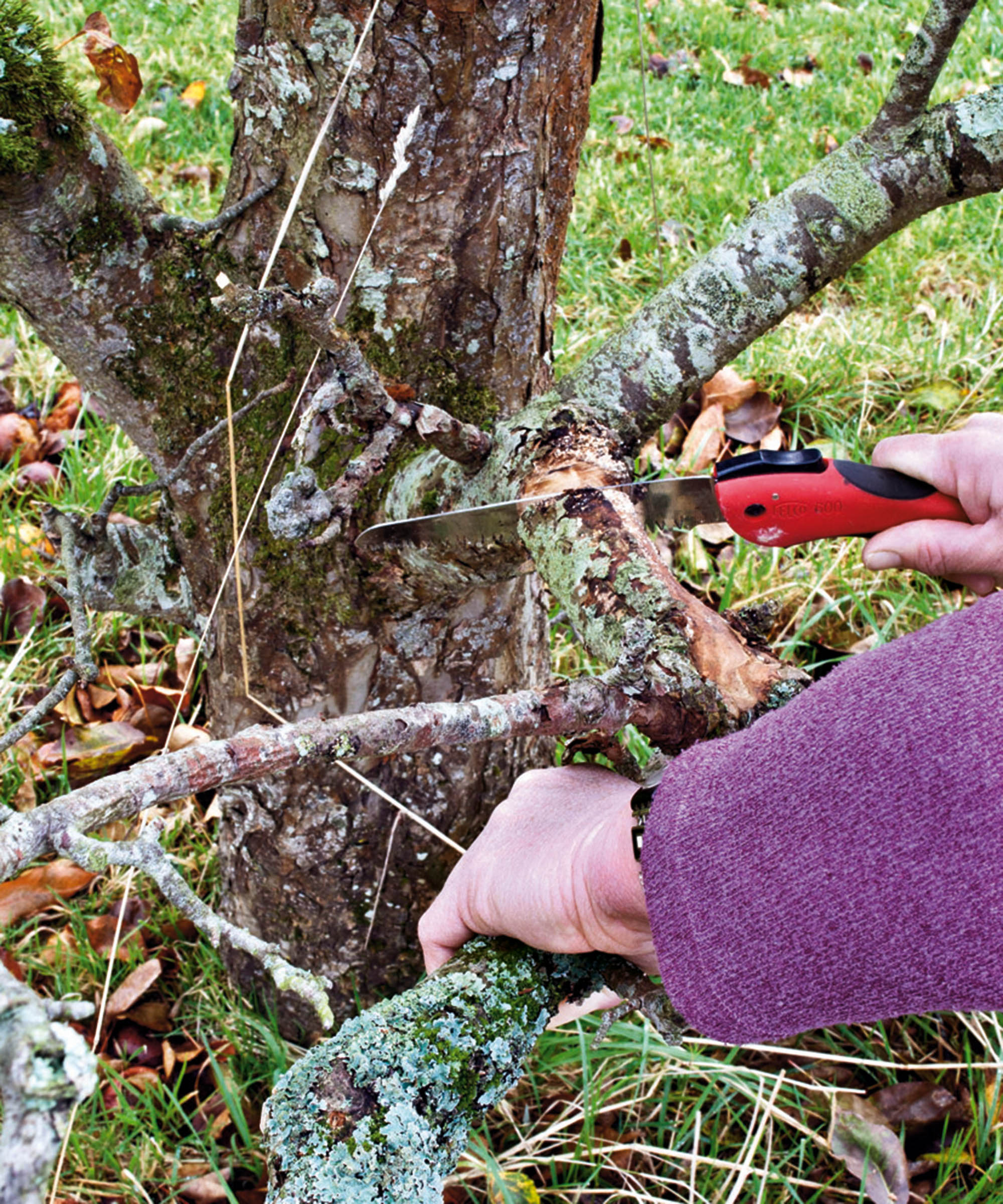

Sarah is a horticultural writer and editor for more than 20 years, working on gardening websites, magazines, books, radio shows and TV. Her life-long love of plants, especially houseplants, was triggered by her parents and grandparents. Sarah travels a lot and loves seeing tropical plants in the wild, and tending her 100+ plants at home. She has worked for the RHS, BBC Gardeners' World magazine and radio show Gardeners' Question Time and later Gardeners' World TV show.
